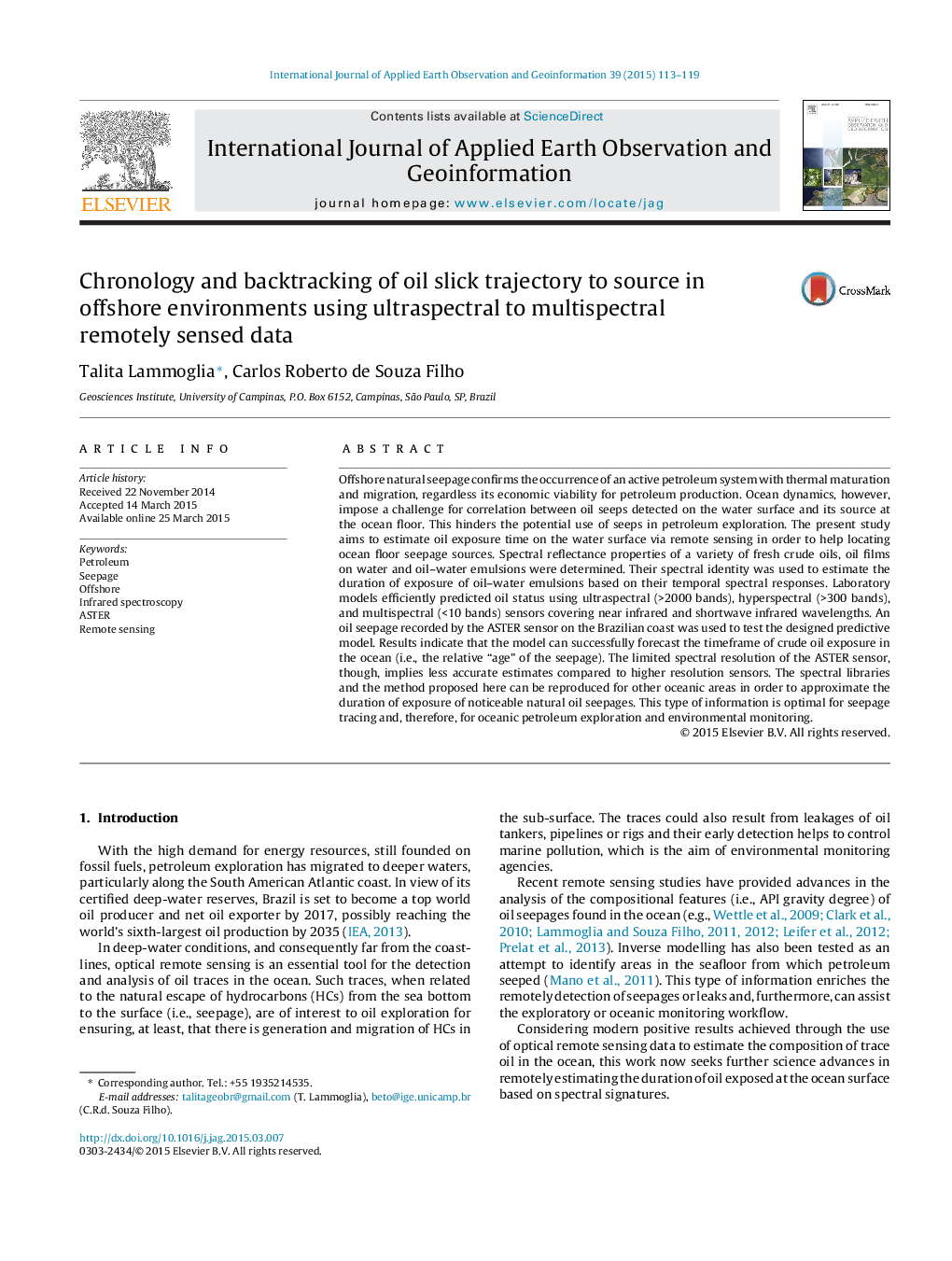| کد مقاله | کد نشریه | سال انتشار | مقاله انگلیسی | نسخه تمام متن |
|---|---|---|---|---|
| 6348624 | 1621819 | 2015 | 7 صفحه PDF | دانلود رایگان |
- Heavier and lighter oils were used to produce enduring oil-water emulsions in the lab.
- VNIR-SWIR reflectance spectra of the products showed distinct signatures over time.
- Models based on these signatures were applied to an offshore seepage using ASTER data.
- Results indicate that we can forecast oil exposition timeframe and seepage source.
- The approach can be applied to hydrocarbon exploration and environmental monitoring.
Offshore natural seepage confirms the occurrence of an active petroleum system with thermal maturation and migration, regardless its economic viability for petroleum production. Ocean dynamics, however, impose a challenge for correlation between oil seeps detected on the water surface and its source at the ocean floor. This hinders the potential use of seeps in petroleum exploration. The present study aims to estimate oil exposure time on the water surface via remote sensing in order to help locating ocean floor seepage sources. Spectral reflectance properties of a variety of fresh crude oils, oil films on water and oil-water emulsions were determined. Their spectral identity was used to estimate the duration of exposure of oil-water emulsions based on their temporal spectral responses. Laboratory models efficiently predicted oil status using ultraspectral (>2000 bands), hyperspectral (>300 bands), and multispectral (<10 bands) sensors covering near infrared and shortwave infrared wavelengths. An oil seepage recorded by the ASTER sensor on the Brazilian coast was used to test the designed predictive model. Results indicate that the model can successfully forecast the timeframe of crude oil exposure in the ocean (i.e., the relative “age” of the seepage). The limited spectral resolution of the ASTER sensor, though, implies less accurate estimates compared to higher resolution sensors. The spectral libraries and the method proposed here can be reproduced for other oceanic areas in order to approximate the duration of exposure of noticeable natural oil seepages. This type of information is optimal for seepage tracing and, therefore, for oceanic petroleum exploration and environmental monitoring.
Journal: International Journal of Applied Earth Observation and Geoinformation - Volume 39, July 2015, Pages 113-119
